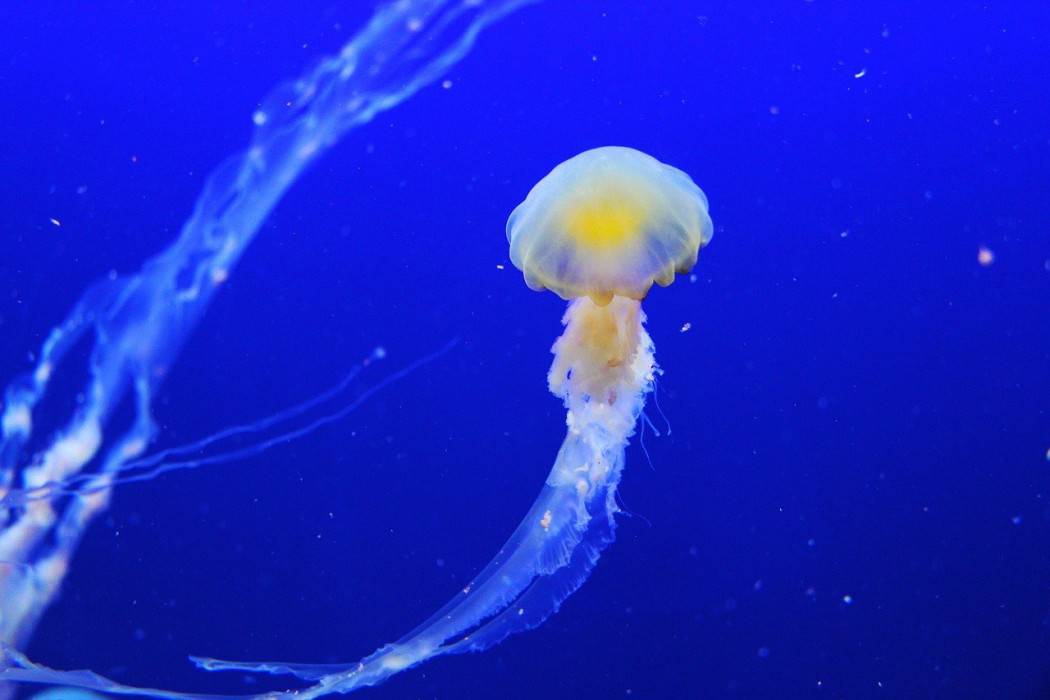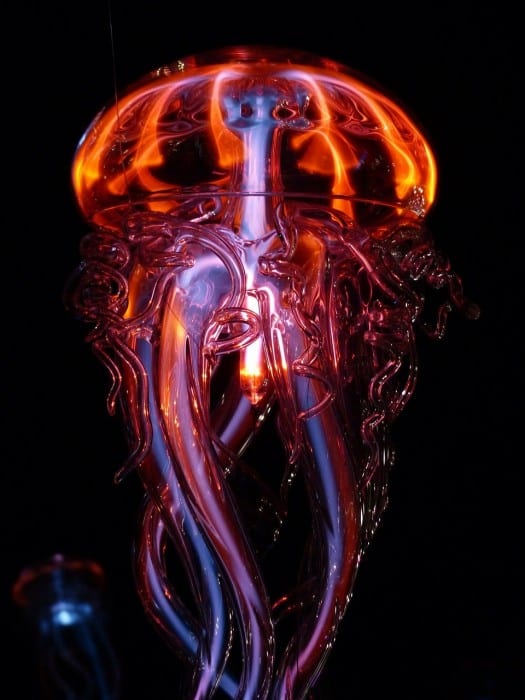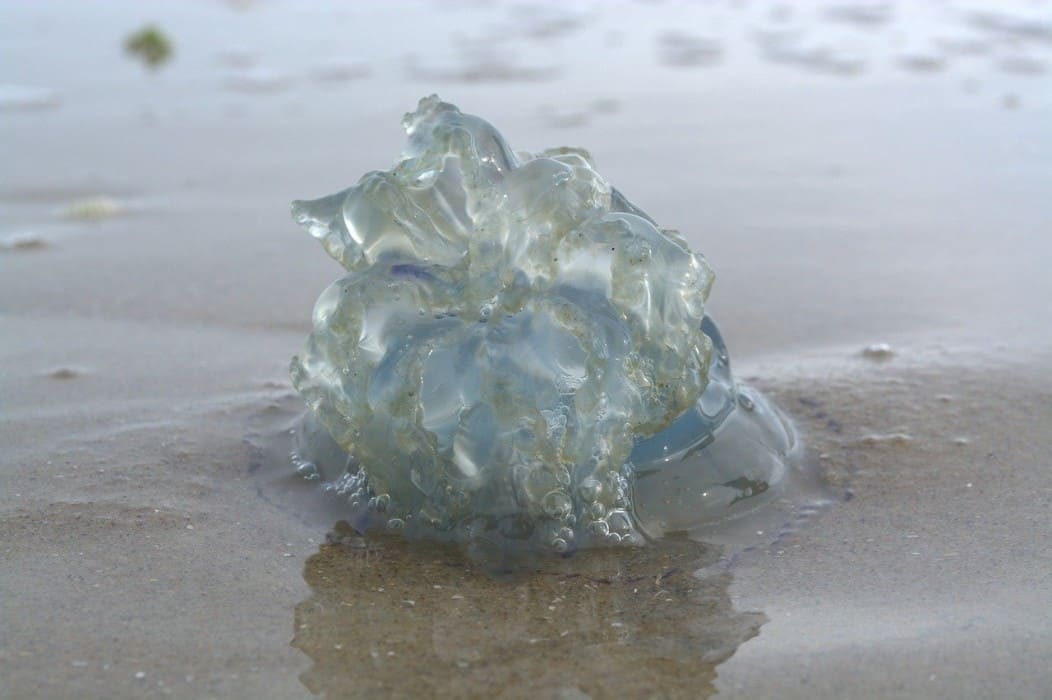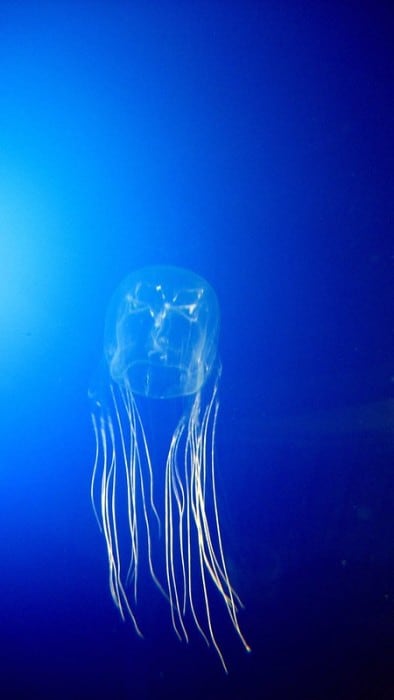
Most people, especially the children think and consider, all animals that live in water as fish but you know it’s not true because of their own unique features all marine or freshwater animals classified differently one of which is the Jellyfish.
Jellyfish is not actually a fish that you may or may not know till now so let’s know Why a Jellyfish is not an actual fish, and other unique features of Jellyfish that set it apart from the fishes.
Is A Jellyfish A Fish? No, A Jellyfish is not a fish because it is an invertebrate and is less advanced than a fish, and it does not have features of fishes such as backbone, gills and fins. Therefore a Jellyfish is not actually a fish and does not belong to any fish categories at all.
Table of Contents
What are Jellyfish?
Jellyfish are water animals, and contain 95% water in their body with characters stinging cells on their tentacle (arms) that is used for both offense and defense, and don’t have specialized organs such as eyes, fins, no complete digestive, and respiratory system(Incomplete digestive, and respiratory system present) because they are lower animals not the advance like humans, whales, and even not advanced as much as the common fish.
Why is Jellyfish not a Fish?(Scientific Explanations)
A Jellyfish classified as lower animals whereas the fish is classified as higher animals when compared among themselves since they differ following features.
1.Level of cell organization:
The level of cellular organization in Jellyfish is multicellular whereas in fishes cells organized to form organs and organ systems such as the digestive system, respiratory, circulatory system, nervous system(for example, brain), etc.
2.Digestion process and Respiration process:
- The digestive system in fishes is a complete type of digestive system meaning there are two parts in the digestive system meant for ingestion and egestion(excretion), whereas Jellyfishes have an incomplete type of digestive system meaning only one part serves for both ingestion and egestion(excretion).
- Similarly, the respiration in Jellyfish occurs through the body surfaces whereas in fishes it occurs in the respiratory system.
- Fishes have eyes, fins, backbone whereas Jellyfish do not possess these things.

We shall see a table of Fish versus Jellyfish to understand the features of both animals by comparing their characteristics.
Fish vs Jellyfish
| Sl. No. | Fish | Jellyfish |
| 1 | Higher or advance than Jellyfish | Lower animal than Jellyfish |
| 2 | Have backbone | No backbone |
| 3 | Have eye | No eye(can detect light) |
| 4 | Organ system | Multicellular |
| 5 | Complete Digestion system(two different Ingestion and excretion parts) | Incomplete Digestion system(One same part for both Ingestion and excretion) |
| 6 | Complete Respiration system | Incomplete Respiration system(respires through body surface) |
| 7 | Possess fins for swimming. | No fins.(but use jet propulsion for swimming) |
| 8 | More advanced Nervous system. | Less advanced Nervous system. |
What are the characteristics of a Jellyfish?
1.Habitat:
Aurelia or Jellyfish are also found in coastal water of the tropical and temperate seas. These are marine creatures.
2.Body and parts of a Jellyfish:
Jellyfish have a soft gelatinous body with many short or long tentacles(for capturing food) that can grow as long as 73 meters and about 8 sense organs.
On tentacles minute projections, cells present, and they are called nematoblasts(stinging cells).
Tentacles with nematoblasts or nematocysts (stinging cells) are acting as organs of offense(to attack other aquatic animals) and defense(To protect from other animals), Where fishes can get protection sometimes. The mouth is surrounded by 4 long appendages.
3.How do Jellyfish swim or move:
The Jellyfish swims in water by contracting and relaxing the ring of muscles around the body, that is they squeeze their body in order to push the water present at the bottom which causes moving forward. These types of swimming enable the most energy-efficient movement, therefore they are even considered as the most energy-efficient animals in the world.
4.Reproduction:
Undergoes both sexually and asexually reproduction mode and does not have locomotory organs like the fins of a fish while jet propulsion helps them to swim but only tentacles help for food capturing.
Jellyfish can reproduce asexually(without sex cells or gonads ) which involves one Jellyfish and sexually (with sex cells or gonads) involving two Jellyfish of the opposite sex.
Did you know how many eggs can a Jellyfish produce? Some Jellyfish can produce 45,000 eggs.
5.The Bioluminescence in Jellyfish:
Have you wondered why the seashore glows at night? It is because of some protein present in the Jellyfish which shows bioluminescence character. These glowing substances in Jellyfish helped scientists to detect cancer cells, that is, by inserting substances responsible for bioluminescence from Jellyfish into cancer cells. Thus found bioluminescence activity in cancer cells while no bioluminescence activity in normal healthy cells.
6.One mouth serves all the functions that are both ingestion and excretion:
Consisting the only mouth for food intake also to excrete it out of the body.
7.Respiration in Jellyfish:
Jellyfish respires through the body’s surface. Therefore, they have an incomplete or primitive respiratory system compared to the fish.
8.Colors of a Jellyfish:
Some Jellyfish are transparent, some are pink, yellow, blue, and purple, and often are luminescent.
9.Backbone in a Jellyfish:
There is no such thing as the backbone in Jellyfish since they are lower animals. Therefore, they are invertebrates meaning they do not have a backbone.
What is a Jellyfish classified as?
Jellyfish also called aurelia classified as coelenterates meaning stinging animals. These are special creatures evolved in water 50 crore years ago, One of the oldest multicellular organisms in the world. Sizing from ant-size to more than a human-size exclusively marine with a soft body containing approximately 95% of water.
Why are Jellyfish called Fish?
In the past, people started to call most of the animals living in water as fishes including Jellyfish even though Jellyfish is not actual fish since they do not possess backbones, and fins like fish but have amazing characters that even absent in fishes (for example stinging cells) so Jellyfish is classified as a different category rather than fishes. However, we refer to the Jellyfish as fish till today.
How long do Jellyfish live in a tank?
The average life expectancy of Jellyfish depends on the natural or artificial climate of the environment they live in and also depends on the type of Jellyfish you choose as pets, but the lifespan of Moon Jellyfish (Aurelia Aurita) is around 1 to 2 years, while Blue blubber jellies can live for 12 to 15 months and surprisingly the Sea Nettles can thrive for several years, only if they are taken care appropriately in the artificial setup.
Types of Jellyfish
There are about 2,000 known or discovered Jellyfishes are there, However, scientists expect that around 30,000 Jellyfishes may be present and are not discovered till now.
We shall see some famous Jellyfishes out of what have been discovered till today in the 20th century.
- Lion’s mane Jellyfish (Largest Jellyfish in the world): Jellyfish can grow very very big. A lion’s mane is the Largest Jellyfish whose tentacles can grow up to 120 feet (73 meters), which is larger than the length of a blue whale. And there are different colors of lion’s mane Jellyfish such as red or purple.
- Craspedacusta sowerbii is a freshwater Jellyfish. Most Jellyfish are marine animals, although a few are freshwater Jellyfish such as Craspedacusta sowerbii.
- Bloodybelly Comb Jellyfish: A harmless comb jellies to humans
- Crystal Jellyfish: They are called so because, in the daylight, it looks crystal clear.
- Cauliflower Jellyfish: They are called so because their bell resembles a vegetable.
- Atolla Jellyfish: A Jellyfish with better bioluminescence helps it to catch its prey while also avoiding its predators.
- Turritopsis dohrnii: Is called Immortal Jellyfish because of its ability to go back into its young stage from an adult under unfavorable conditions.
- Fried Egg Jellyfish: Less harmful jellies, they are called so because they resembles fried eggs in appearance.
- Pink meanie Jellyfish: A pink fluorescent Jellyfish.
- White-spotted jellyfish, Flower Hat Jellyfish, and Black Sea nettles Jellyfish are some famously known jellyfishes.
- The Box Jellyfish: A box Jellyfish can be very dangerous as they produce Venom or toxic in stinging cells which are too fatal to humans.
- The Australian box Jellyfish can kill a human as it is the most dangerous Box Jellyfish. There are around 50 species of box Jellyfish.
They are responsible for more deaths of humans during swimming/diving in the sea.
Examples of a box Jellyfish are:
- Chironex fleckeri
- Carukia barnesi
- Malo kingi
Did you know that box Jellyfish are more advanced than other Jellyfishes.


What do Jellyfish Eat?
Food of a Jellyfish includes small zooplankton, fish, fish eggs, Larvae. They have only one mouth for food intake also to excrete it out of the body.
FAQ:
Are all Jellyfish immortal? The lifespan of a jellyfish is 2 to 3 years under an artificial setup. Some jellyfish can live up to decades and some are even considered immortal.
Why are Jellyfish called so? The jellyfish are called so because of Jelly-like substances present in their body. That is also responsible for transparent body and bioluminescence.
